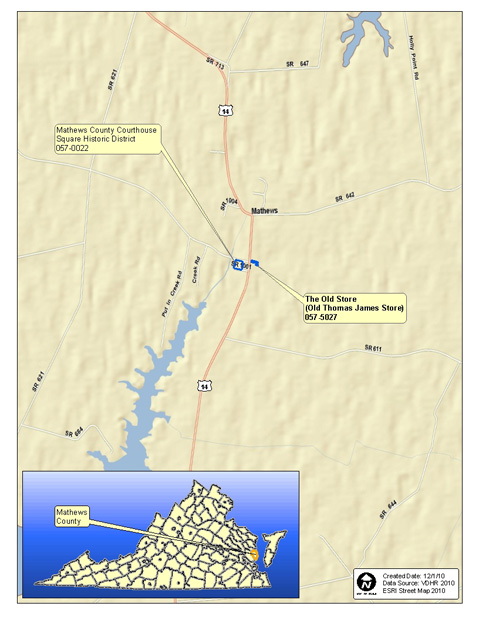Overview.
By the end of the 18th century, stores like Thomas James's were among the most common non-domestic buildings in Virginia. They could be found in towns, at crossroads, or on plantations and farms. Customers could purchase or trade crops or other items for foodstuffs, textiles, tools, or other necessities. Merchants often imported and exported goods, selling imports to local residents and storing materials awaiting export. In Mathews, with its easy access to the Chesapeake Bay and world trade beyond, the most commonly exported goods were food crops, tobacco, and cotton.
Rural or village stores in the American South were the center of a community's economic and social life—where storekeepers played an important role. They collected crops from farmers for retail or export. They extended credit so farmers could purchase goods against future crops. Often a storekeeper also served as a justice of the peace and postmaster, as did Thomas James. A post office attracted customers and trade, and since a postmaster had access to newspapers and magazines, a storekeeper was often a good source of information about news and events beyond the community.
By the end of the 18th century, stores like Thomas James's were among the most common non-domestic buildings in Virginia. They could be found in towns, at crossroads, or on plantations and farms. Customers could purchase or trade crops or other items for foodstuffs, textiles, tools, or other necessities. Merchants often imported and exported goods, selling imports to local residents and storing materials awaiting export. In Mathews, with its easy access to the Chesapeake Bay and world trade beyond, the most commonly exported goods were food crops, tobacco, and cotton.
Rural or village stores in the American South were the center of a community's economic and social life—where storekeepers played an important role. They collected crops from farmers for retail or export. They extended credit so farmers could purchase goods against future crops. Often a storekeeper also served as a justice of the peace and postmaster, as did Thomas James. A post office attracted customers and trade, and since a postmaster had access to newspapers and magazines, a storekeeper was often a good source of information about news and events beyond the community.

Map by Dominic Bascone, DHR

